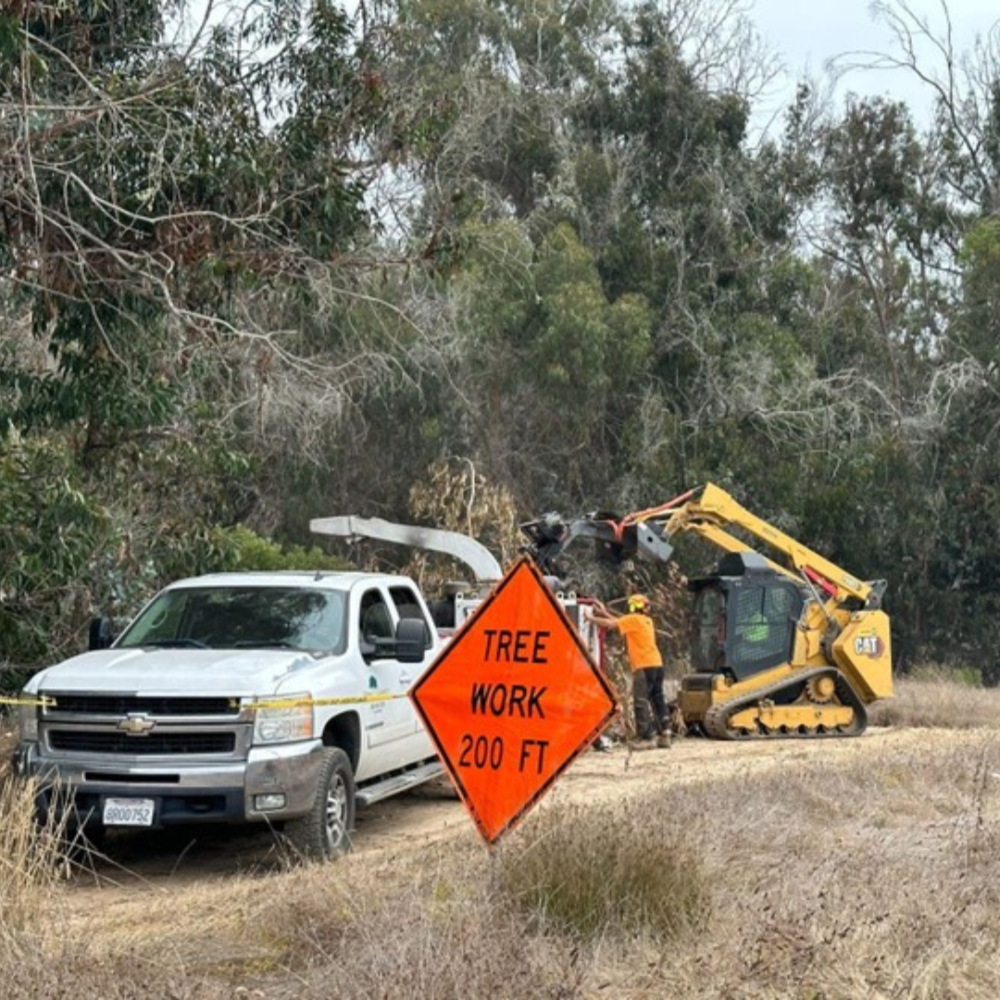
Fuel reduction work on Ellwood Mesa is in progress. Years of drought combined with recent winter storms have created extremely hazardous fire conditions at Ellwood Mesa Open Space in the City of Goleta. These conditions threaten surrounding neighborhoods and important habitat for monarch butterflies and other wildlife. Managing the hazardous fuel load is critical to reduce the risk of fire in Ellwood. The primary fuels of concern are dead trees, understory vegetation, and ‘ladder fuels’ such as grasses, brush, and lower branches that can spread fire into the forest canopy.
The City developed a detailed approach to balance fire risk reduction and resource protection. Fuel reduction strategies were prepared in consultation with fire, tree, butterfly, and wildlife specialists. The permit was issued by the California Coastal Commission on May 10 and work began on May 20. Active and upcoming work areas are posted weekly at CityofGoleta.org/Ellwood-now.
The Ellwood Mesa Neighborhoods Hazardous Fuel Reduction Project will create a defensible space buffer around residences and address the excessive buildup of dead eucalyptus trees. These measures will help protect over 3,500 homes and sensitive wildlife species from uncontrollable wildfire. Funding for this project comes from a CAL FIRE Wildfire Prevention Grant of $1.7 million. Largescale wildfire
George Thomson, City of Goleta’s Parks and Open Space Manager, said “Heavy winter storms this year and last year really exacerbated the hazardous conditions within the eucalyptus groves at Ellwood. The massive quantity of dead wood poses a great risk to the community, the butterfly habitat, and all the wildlife that calls Ellwood home. The City of Goleta is excited to move this major project forward to reduce the risk of wildfire while also protecting monarch butterflies and wildlife habitat.”
Work on City of Goleta public property includes:
- Mowing grasses
- Clearing flammable materials from the ground
- Reducing shrub height to 2 feet
- Trimming and thinning unhealthy trees
- Pruning lower branches 6 ft up, or lower 1/3 of tree height on smaller trees
- Removing fire prone landscaped non-native vegetation.
Certified arborists and biologists will ensure sensitive natural resources are protected. Work within sensitive habitat areas will be modified according to the needs of the resource and will include:
- Preconstruction surveys to identify important flora and fauna
- Butterfly specialists to monitor key trees within and around the monarch aggregation sites
- Certified arborists to evaluate and inform tree removal methods
- Archeological and cultural resources monitor to detect and avoid impacts to historic resources
- Special crews and equipment to minimize impacts.
In addition to reducing fire risk, the tree and vegetation work is an important first step toward enhancing monarch butterfly habitat in Ellwood Mesa and complements the large-scale habitat enhancement work starting later this summer.
For information contact:
George Thomson, Parks and Open Space Manager
gthomson@cityofgoleta.org
805.961.7578
The Ellwood Mesa Neighborhoods Hazardous Fuel Reduction Project was prepared according to the City’s adopted Community Wildfire Protection Plan (CWPP 2012) and Monarch Butterfly Habitat Management Plan (MBHMP 2019).
Funding for fire prevention activities in and near Ellwood Mesa (Ellwood Mesa Neighborhoods Hazard Fuel Reduction Project) is part of California Climate Investments, a statewide program that puts billions of Cap-and-Trade dollars to work reducing GHG emissions, strengthening the economy, and improving public health and the environment – particularly in disadvantaged communities. The Cap-and-Trade program also creates a financial incentive for industries to invest in clean technologies and develop innovative ways to reduce pollution. California Climate Investments projects include affordable housing, renewable energy, public transportation, zero-emission vehicles, environmental restoration, more sustainable agriculture, recycling, and much more. At least 35 percent of these investments are located within and benefiting residents of disadvantaged communities, low-income communities, and low-income households across California. For more information, visit the California Climate Investments website at: www.caclimateinvestments.ca.gov.


